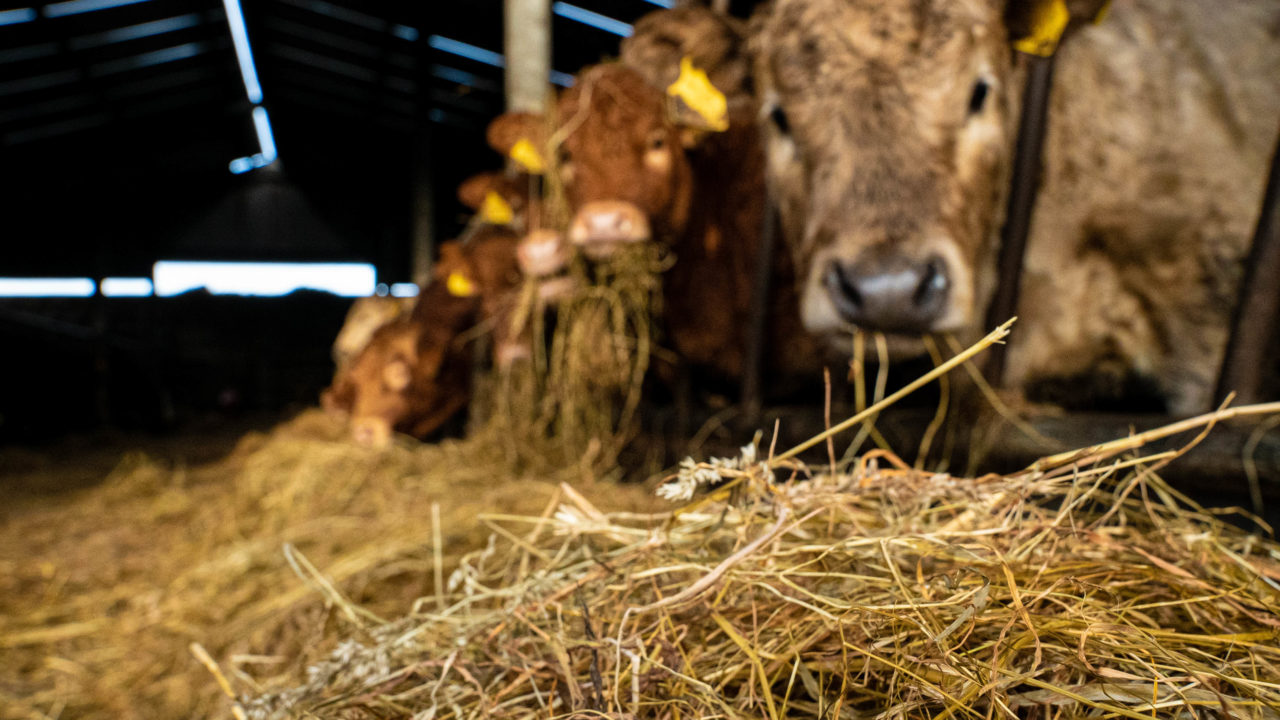The increases in beef prices paid to farmers throughout the EU seem to be coming to a general halt, according to the EU’s latest short-term outlook for EU agricultural markets in 2022.
The report outlines the latest market trends across various agri–food commodities, including the meat sector.
Beef
Focusing first on beef, the price rises seen since the beginning of 2021 – due to low supply globally and improving demand post Covid-19 lockdown – seem to have stopped in recent weeks.
Between January and March, EU beef production declined by 0.8% year-on-year. However, this number hides fairly large differences between EU countries.
Some countries have declining beef cattle numbers, while some compensate for this through live imports. Some countries have both increasing cattle numbers and increasing live imports.
The report notes that, in Ireland, dairy cows “continue replacing suckler cows”.
It also outlines that the continuing high level of input costs may lead to additional slaughterings later in the year and lower carcass weights.
Overall, beef production in the EU is set to decline by 0.5% this year.
In the first three months of the year, EU beef exports increased by 6% compared to same period of 2021.
Exports to some high-value markets are doing well at present, including Canada (up 36%), Japan (up 61%) and the UK (up 32%).
However, the report notes that these figures compare to relatively weak exports in quarter one (Q1) of 2021.
For the whole year, EU beef exports are expected to grow by 4%, constrained by limited domestic availability and the relatively high domestic prices.
EU live exports of beef declined by 10% in Q1 of 2022. Completely frictionless trade with the UK is not yet in place, while trade with Russia has obviously declined. A decline in live beef exports of 8% is predicted for 2022.
EU beef imports are expected to increase significantly by 15% in 2022, due to the reopening of food services.
Sheep
Turning to the sheep sector, and EU lamb prices remain at unprecedented high levels. After the decline in the beginning of the year, prices reached record levels again during Easter.
The main reason for this is low domestic supply against a sustained demand in the EU.
A substantial reduction of the flock will limit production increases in certain EU countries, despite the favourable prices. The current situation of high feed prices may lead to additional slaughterings and lighter slaughter weights in feed-intensive production systems.
Overall, a stabilisation of production is expected in 2022, which is likely to contribute to sustained domestic prices.
EU sheep meat exports decreased by 11% in Q1 2022 compared to the same period last year. A shortage in domestic supply; continuing trade frictions with the UK; and relatively high EU prices will limit the recovery of exports to a 2% increase in 2022, starting from already low 2021 numbers.
EU exports of live sheep decreased in the same period, with all main export destinations (bar Jordan in the Middle East) seeing decreases.
EU imports of sheep meat increased by 12% in Q1 2022. Shipments from the UK to the EU recorded a strong recovery of 31%, while imports from New Zealand stayed relatively stable.
However, high shipping costs and more attractive markets in Asia will limit the increase of EU imports to 6% in 2022, assuming no change in trade frictions with the UK.
Pigmeat and Poultry
Since February 2022, EU pigmeat price has rapidly recovered. However, increasing concerns for the environment; reduced export prospects; sustained high input costs; and African swine fever (ASF) may push production down.
EU consumption of pigmeat is likely to decline by 3.3% this year.
As China continues to restore its pigmeat production capacity, EU exports to that destination returned to pre-ASF levels and are expected to decrease by 40% in 2022.
In the meanwhile, EU exports to the UK continue improving, and may almost reach their 2019 level.
Overall, EU pigmeat exports are expected to decrease by 9.6% in 2022, though this would still be 19% higher than the 2016-18 average.
EU pigmeat imports from the UK are expected to increase strongly in 2022, by 34%, and, as a result, total EU pigmeat imports are due to increase by 28% – though this would still be 21% lower than the 2016-2018 average.
On poultry, EU broiler price showed a strong surge by 13% in five weeks from late February to early April. Since April, it levelled off at 38% above the 2017-2021 average.
The sector is facing an avian influenza (bird flu) epidemic of “historic magnitude”. However, it’s impact on meat production is differs between countries, ranging from moderate to severe.
High input costs are also constraining production, as are growing environmental concerns and regulations.
Poultry trade with the UK is resuming pre-Brexit levels. EU exports to the UK are expected to increase by 20% in 2022, to a level 6% above the 2016-19 average.
EU poultry imports from the UK may increase by 25% in 2022, though this would still be 3% below the 2016-19 average.
Due to bird flu, EU exports are constrained due to bans in a number of countries. EU poultry exports will increase, but only by 0.9%.
The reopening of food services in the EU is likely to continue pushing poultry imports up. Overall, EU poultry imports are expected to increase by 16.5% in 2022, though this would still be 4% lower than the 2016-2019 average.
